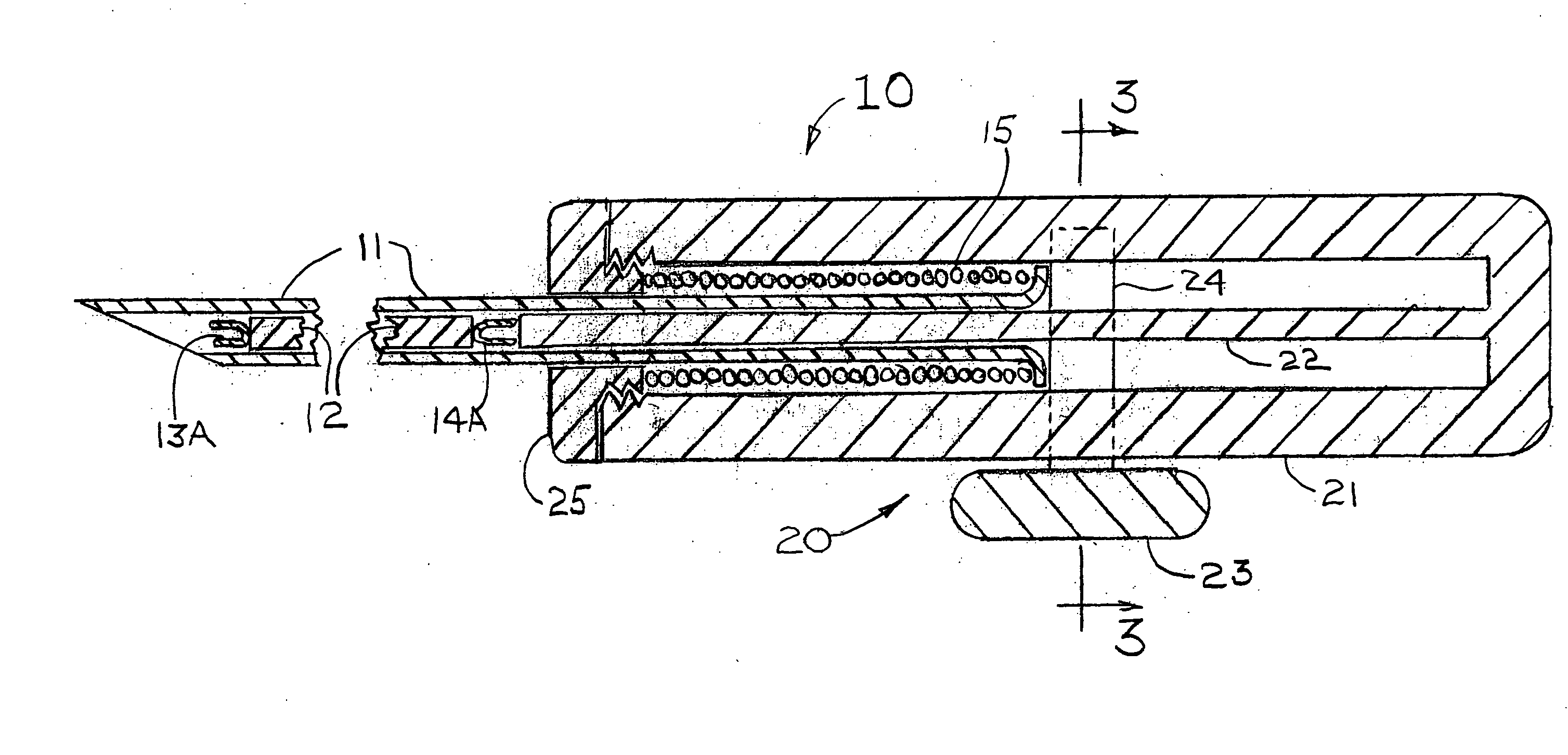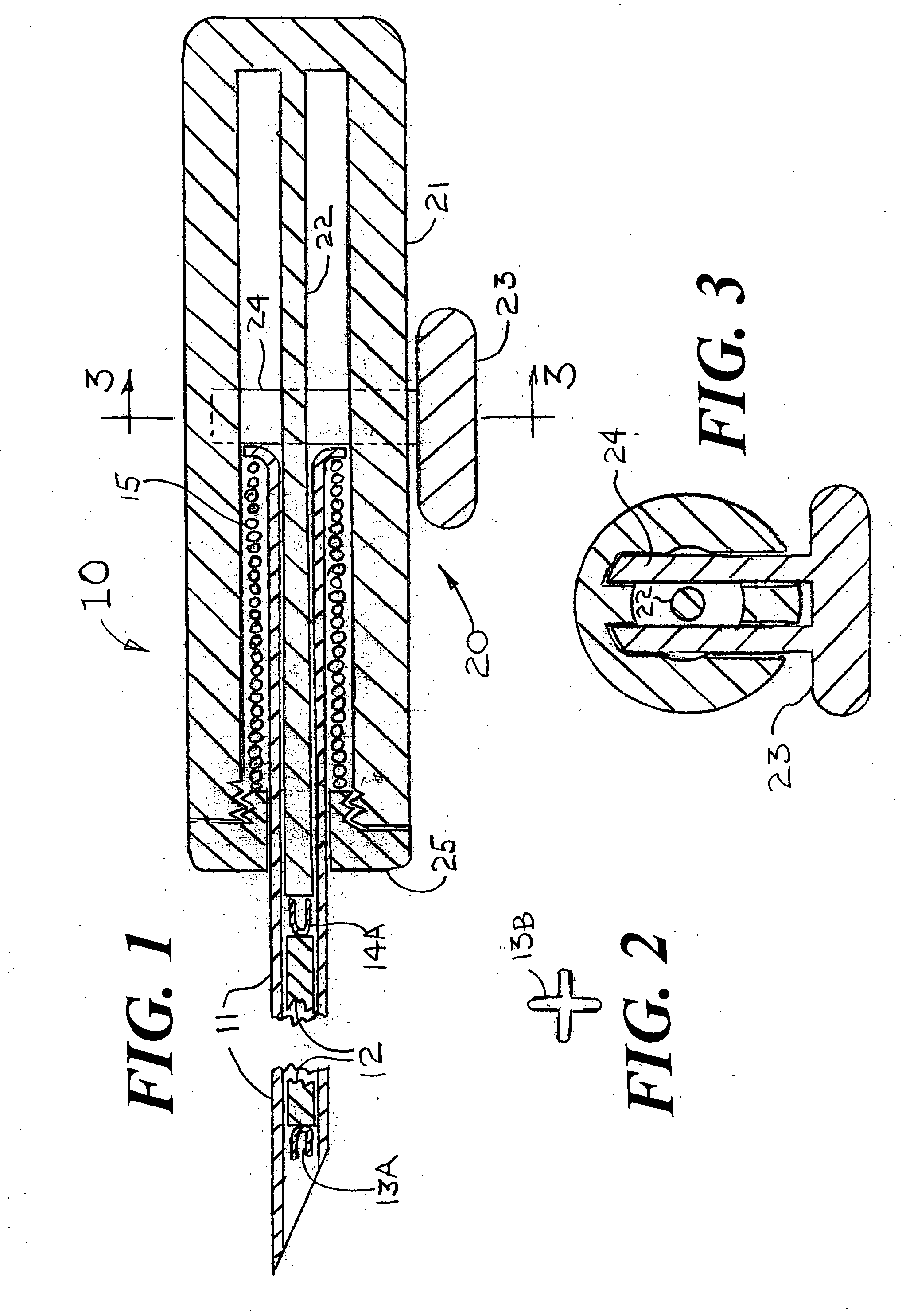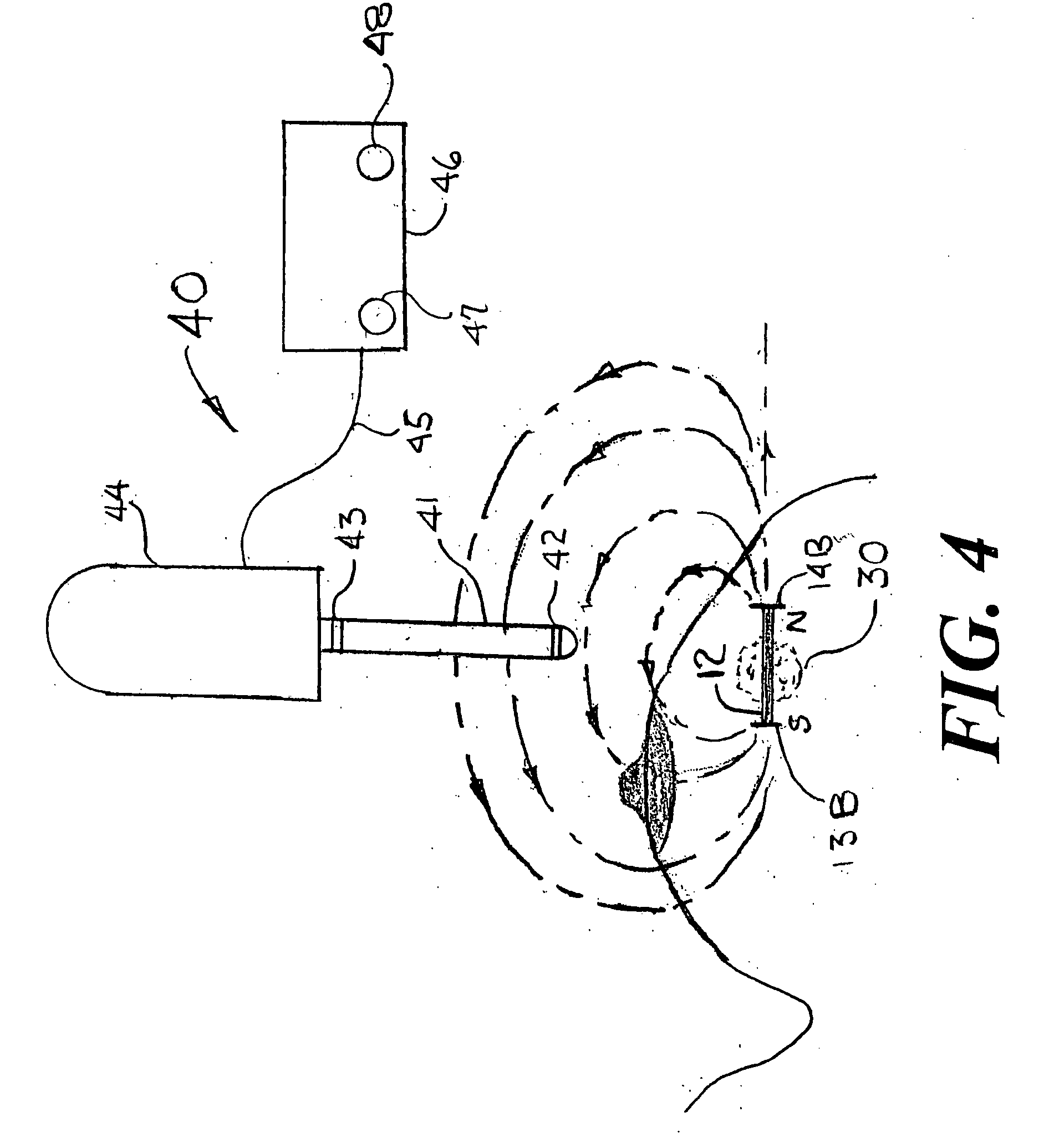Means and method for marking tissue in a human subject
- Summary
- Abstract
- Description
- Claims
- Application Information
AI Technical Summary
Benefits of technology
Problems solved by technology
Method used
Image
Examples
Embodiment Construction
[0030]FIG. 1 shows a magnet injector 10 having a cannula 11 into which is placed a permanent magnet 12 having a pre-deployed distal anchor 13A fixedly attached at the magnet's distal end and a pre-deployed proximal anchor 14A fixedly attached at the magnet's proximal end. It is also conceived that the magnet could have one or more anchors deployed near the center of the magnet that also would be used to stabilize the position of the magnet within the breast. The shape of the deployed distal anchor 13B is shown in FIG. 2. The cannula 11 is positioned within a handle 20 that has an outer cylinder 21, an inner cylinder 22 and a spring release handle 23 that is attached to a spring holder 24 that keeps the spring 15 from expanding until the magnet 12 is ready for release within the suspected tissue volume. The distal end of the spring 15 is held by the end cap 25 and the proximal end of the spring is held by an expanded end section of the cannula 11. When the magnet 12 is placed into a ...
PUM
 Login to View More
Login to View More Abstract
Description
Claims
Application Information
 Login to View More
Login to View More - R&D
- Intellectual Property
- Life Sciences
- Materials
- Tech Scout
- Unparalleled Data Quality
- Higher Quality Content
- 60% Fewer Hallucinations
Browse by: Latest US Patents, China's latest patents, Technical Efficacy Thesaurus, Application Domain, Technology Topic, Popular Technical Reports.
© 2025 PatSnap. All rights reserved.Legal|Privacy policy|Modern Slavery Act Transparency Statement|Sitemap|About US| Contact US: help@patsnap.com



